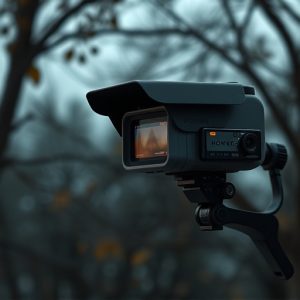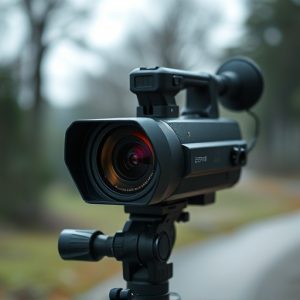Unveiling Hidden Risks: Detecting Battery-Operated Spy Cameras in Childcare
Battery-operated hidden childcare cameras pose significant ethical and safety concerns, prompting th…….
Battery-operated hidden childcare cameras pose significant ethical and safety concerns, prompting the need for advanced detection methods. Light reflection analysis is a scientific technique leveraging optical principles to identify these covert devices, ensuring children's privacy in sensitive settings. As manufacturers develop more sophisticated camera features, experts continue to innovate spy camera detection technologies, fostering an ongoing battle between privacy advocates and potential intruders.
In recent years, the prevalence of battery-operated hidden childcare cameras has raised significant concerns among parents and educators. This article delves into the science behind a cutting-edge detection technique leveraging light reflection. We explore how this method identifies covert cameras within childcare settings, examining its practicality and countermeasures. Understanding these advanced surveillance tools is crucial for safeguarding children and ensuring transparency in educational environments.
- Understanding Battery-Operated Hidden Cameras in Childcare Settings
- The Science Behind Light Reflection Detection Technique
- Practical Implementation and Countermeasures for Spy Camera Detection
Understanding Battery-Operated Hidden Cameras in Childcare Settings
In modern childcare settings, maintaining a safe and secure environment for children is paramount. However, ensuring this safety often requires addressing a subtle yet significant concern: battery-operated hidden cameras. These tiny, often innocuously placed devices pose a unique challenge due to their capability of capturing footage undetected. Understanding how they function, particularly in terms of power sources like battery operation, is crucial for implementing effective countermeasures. By recognizing the nuances of these hidden childcare cameras, caregivers and facility managers can employ advanced detection techniques, such as light reflection analysis, to deter their use and safeguard children’s privacy.
The presence of battery-operated hidden cameras raises significant ethical and safety issues. Caregivers must be vigilant in identifying potential devices, which may be disguised as everyday objects or attached to walls, furniture, or even toys. Light reflection techniques play a pivotal role here, as reflective surfaces can disrupt the camera’s image quality or even expose its location by reflecting light back towards the source, alerting those who would attempt to exploit these surveillance tools in childcare settings.
The Science Behind Light Reflection Detection Technique
The light reflection detection technique is a scientific approach used to uncover hidden cameras, especially those disguised as everyday objects like battery-operated childcare monitors. This method leverages the principles of optics and light behavior. When light encounters an opaque surface, it bounces back or reflects in a specific direction, creating a pattern that can be analyzed. In the case of hidden cameras, if the lens or image sensor is positioned to capture light from a particular angle, its reflection can expose its presence. By strategically placing a bright light source and observing these reflections, experts can detect even miniature cameras, ensuring privacy and security in various settings, including childcare environments where Battery Operated Hidden Childcare Cameras might be employed under unethical circumstances.
Practical Implementation and Countermeasures for Spy Camera Detection
The practical implementation of spy camera detection through light reflection techniques involves a combination of technology and human observation. In recent years, there has been an increase in the use of battery-operated hidden childcare cameras, leading to heightened awareness about privacy intrusion. This has prompted the development of advanced tools capable of detecting these covert devices. By analyzing subtle variations in light reflections, individuals or security systems can identify the presence of hidden cameras, especially in areas where they are not easily visible, such as corners or behind objects.
To countermeasure spy camera detection, manufacturers have started to incorporate more sophisticated design elements into their products. These include infrared LEDs that emit light outside the human visible spectrum, making them harder to detect visually. Additionally, some devices now employ random flash patterns and adaptive lighting to disrupt reflection analysis. It is a constant cat-and-mouse game between those seeking to protect privacy and those trying to infiltrate it, with each side continually innovating to stay ahead.
In light of the growing concern over privacy invasion through battery-operated hidden childcare cameras, understanding the science behind light reflection detection techniques is paramount. This article has explored how these advanced methods can identify clandestine surveillance devices in childcare settings. By employing strategic lighting and reflective surface analysis, professionals can proactively ensure a safer environment for children. While countermeasures exist, continuous innovation and awareness are crucial to stay ahead of potential threats, fostering trust and peace of mind for parents and caregivers alike.


